How to Sauté Shrimp on the Stove
on Oct 06, 2021, Updated Jan 17, 2025
This post may contain affiliate links. Please read our disclosure policy.
Simple sautéed shrimp can be a main course on its own. They are also wonderful when added to grain salads, stir-fries, and many more dishes.
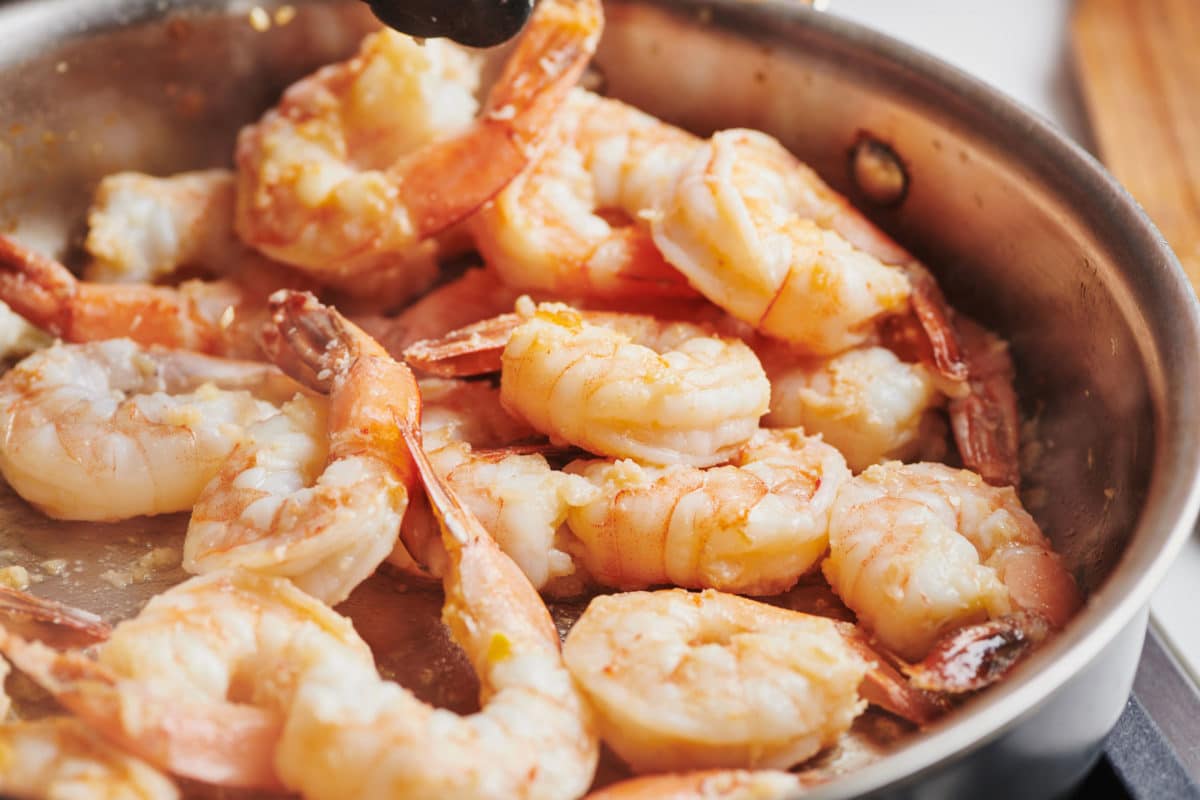
Shrimp are exceedingly popular for good reason. Delicately flavored, slightly sweet, a bit salty, with an appealing firm-crisp texture. They cook up quickly in a skillet or pan and can star in many dishes and many cuisines. Plus, if you get your hands on the big ones (yes, often a splurge, but what a splurge), those are not only a treat but a showstopper. This sautéed shrimp recipe works for any size shrimp and is one of the easiest shrimp recipes around!
Simple sautéed shrimp, perhaps with a splash of lemon juice, some zest, maybe some red pepper flakes, possibly some parsley or another fresh herb, can be a main course on their own Serve it over rice, pasta, grits, or polenta. Sautéed shrimp are also wonderful added into grain salads, stirred into risottos, and as part of stir-fries. Or, think about finishing these with a drizzle of Lemon Butter Sauce.
By signing up, you agree to our Privacy Policy.
What's In This Post?
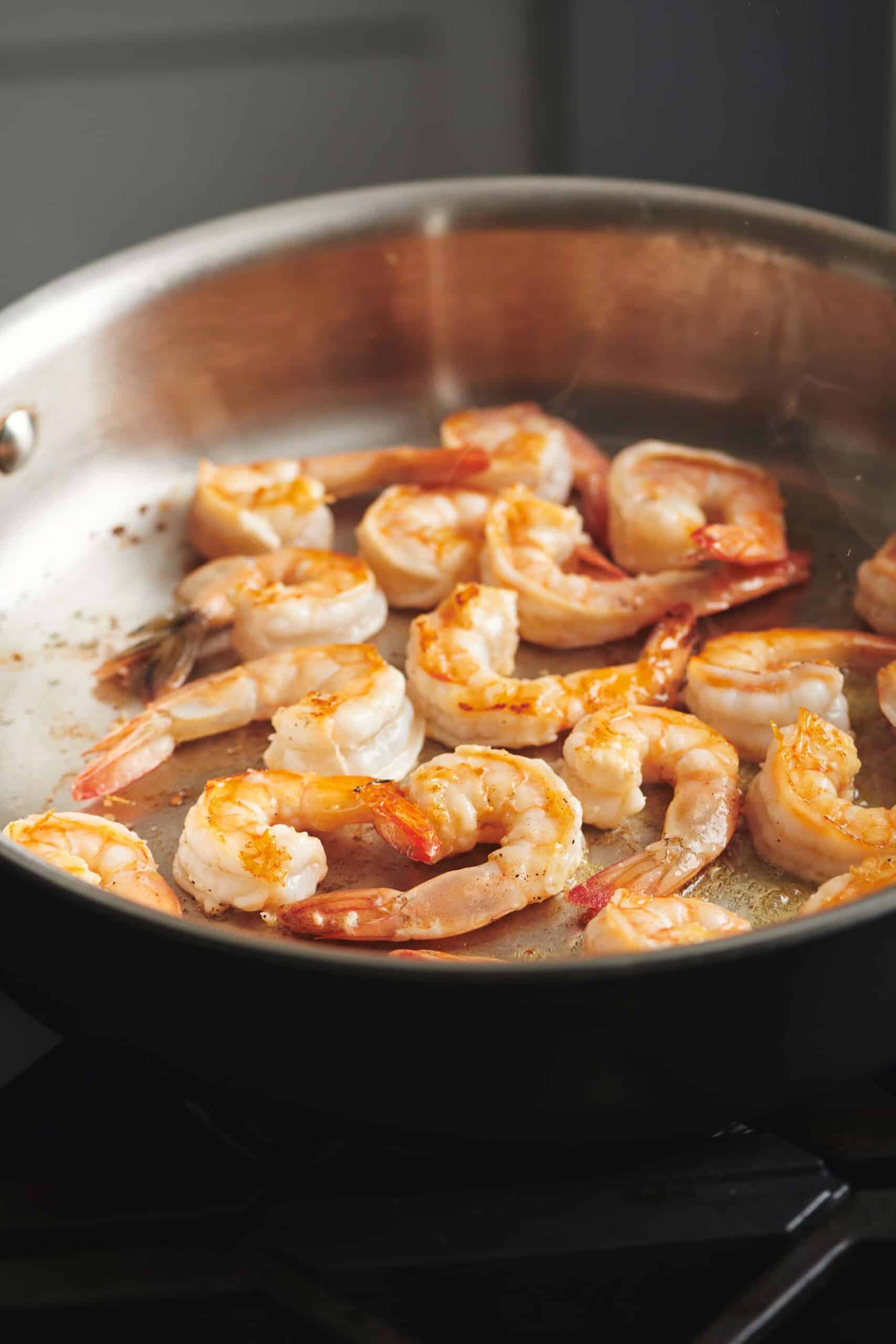
How to Sauté Shrimp on the Stove: Simple sautéed shrimp can be a main course on their own. They are also wonderful added into grain salads, stir-fries, and more.
Sautéing Frozen Shrimp
A bag of frozen shrimp is one of the money-in-the-bank ingredients that I always have on hand. Don’t think for a minute that frozen shrimp are of lesser quality; almost all shrimp have been frozen and defrosted before landing in our kitchens. Sure, if you’re lucky and live by a coast, you might get your hands on some fresh-never-frozen shrimp, and by all means, you should grab them. But otherwise, even most of the shrimp you buy at a good fish store has been frozen. Shrimp defrost quickly, ready to cook up on the stove in as little as 20 minutes.
Make sure you defrost shrimp in your refrigerator, not on the counter, for safety. You can also defrost them by running cold water over them in a colander.
Kitchen Smarts
Read more about everything you need to know to safely thaw frozen shrimp.
Shrimp Sizes
Shrimp range widely in size. They are sold by the quantity per pound and then given corresponding names like medium or jumbo. However, the name attached to the quantity per pound varies from brand to brand, market to market.
Here’s a good scale to use, with the two numbers representing a range of how many shrimp per pound that size will yield. If a recipe provides a count per pound, that’s usually a more reliable measure to go by than a size name.
- Small: 51/60 per pound
- Medium: 41/40 per pound
- Large: 31/35 per pound
- Extra Large: 26/30 per pound
- Jumbo: 16/20 per pound
- Colossal: 13/15 per pound
- Super Colossal: U-12 (meaning under 12 per pound)
- Extra Colossal: U-10 (meaning under 10 per pound…also meaning invite me over for dinner)
For some recipes, smaller shrimp are just fine, possibly even more desirable. For instance, if you are cutting them into pieces, as in for a shrimp stir-fried rice, you shouldn’t spend extra money to buy larger shrimp and cut them up. But if you are making shrimp scampi or Shrimp Fra Diavolo, and you can spare the extra dollars, the big shrimp make quite an impression. They are usually juicier but still retain a snappy texture and are harder to overcook.
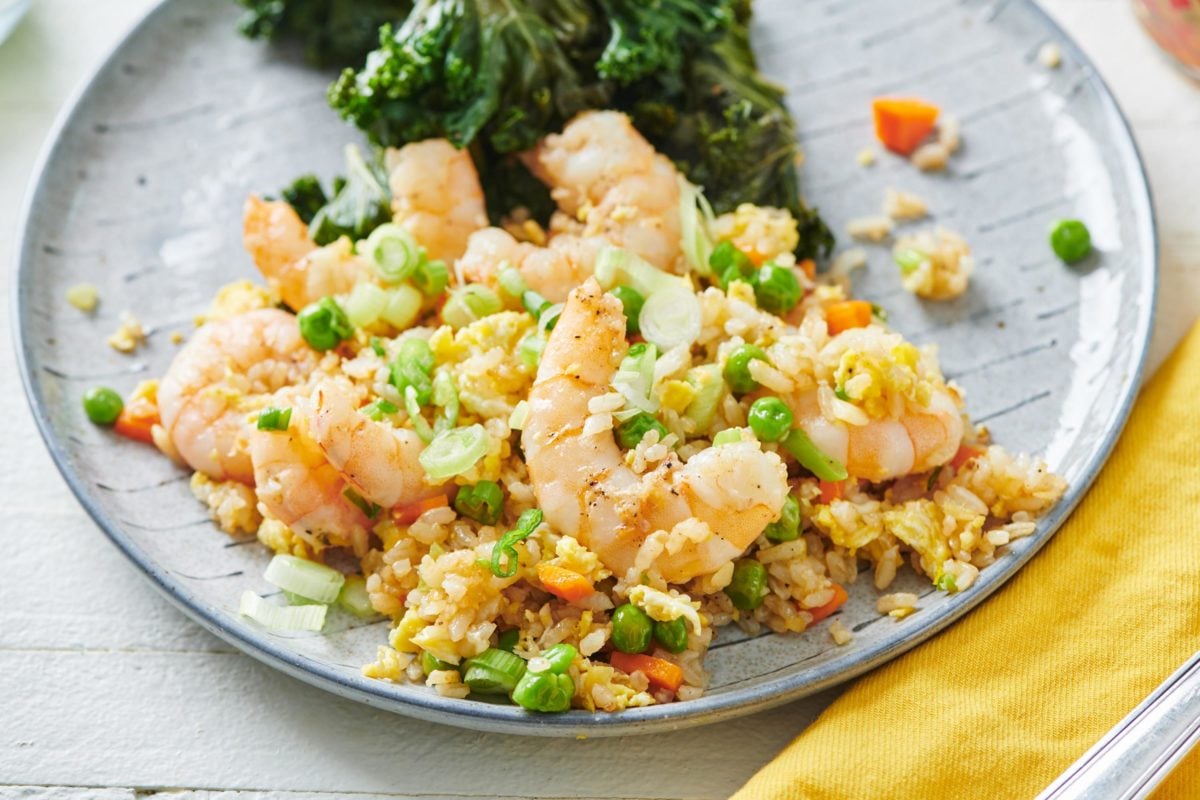
It’s up to you whether you want to leave the tails on or off. It depends on how you plan to serve and eat the shrimp. Leaving the tails on makes the shrimp appear a bit bigger and makes them easier to eat with your hands if that’s the goal. But do remember to put out a small dish for people to discard the tails afterward. No tails means the shrimp are easier to eat as part of a dish, pasta, for instance.
Sautéed Shrimp Ingredients
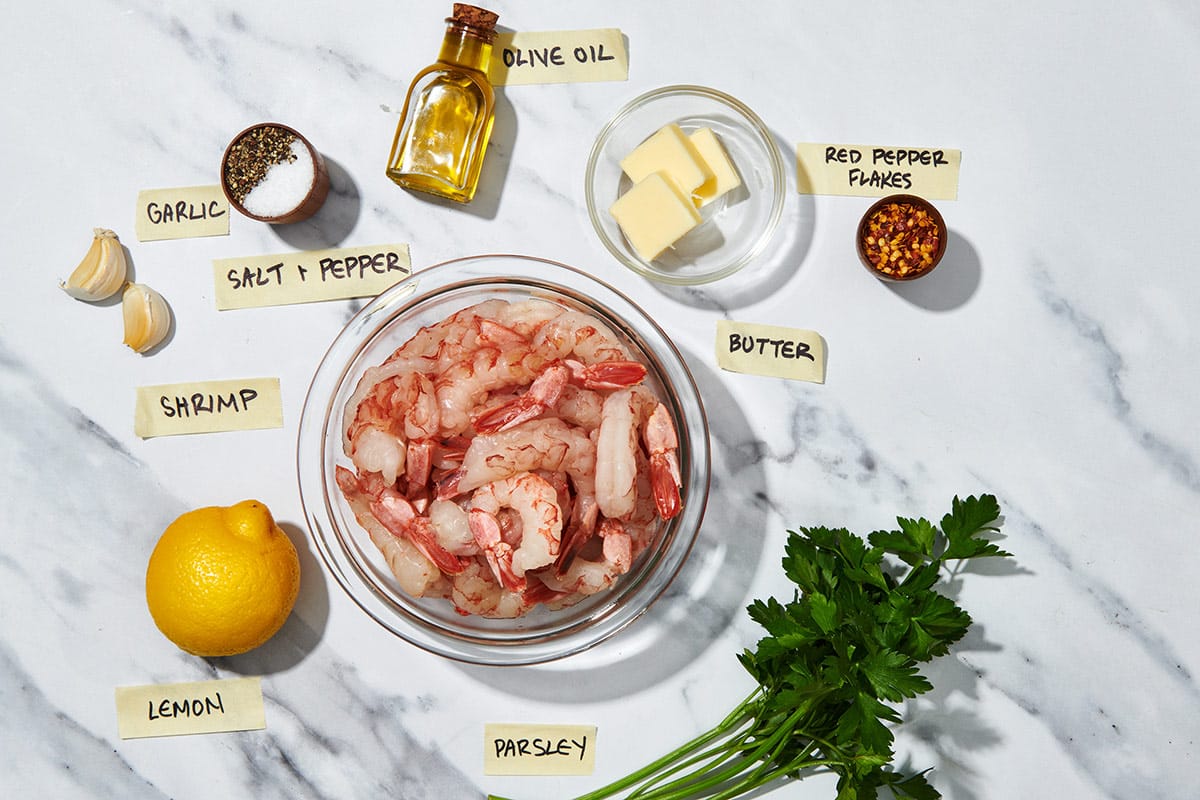
- Shrimp – If possible, use large (31/35), extra-large (21/25 count), or jumbo shrimp (16/20 count). Peeling and deveining the shrimp is necessary if it isn’t already done.
- Butter and olive oil – I like to use a combo of butter and olive oil to cook shrimp in most cases. You are welcome to use all oil (as in when you are making a stir-fry, and in that case, usually vegetable or peanut oil) or all butter (possibly for a French dish). Either/or, or a combo works perfectly. Ghee or clarified butter is another option.
- Fresh garlic – Mince the garlic finely for this simple seasoned shrimp dish.
- Red pepper flakes – Optional!
- Lemon – A little fresh lemon juice and zest give sautéed shrimp a nice fresh taste.
- Fresh parsley – Adding the fresh herb right at the end is a perfect finishing touch.
How to Cook Shrimp on the Stove
- Sauté garlic: Heat the butter and/or oil in a very large skillet over medium heat. Sauté the garlic for 1 minute.
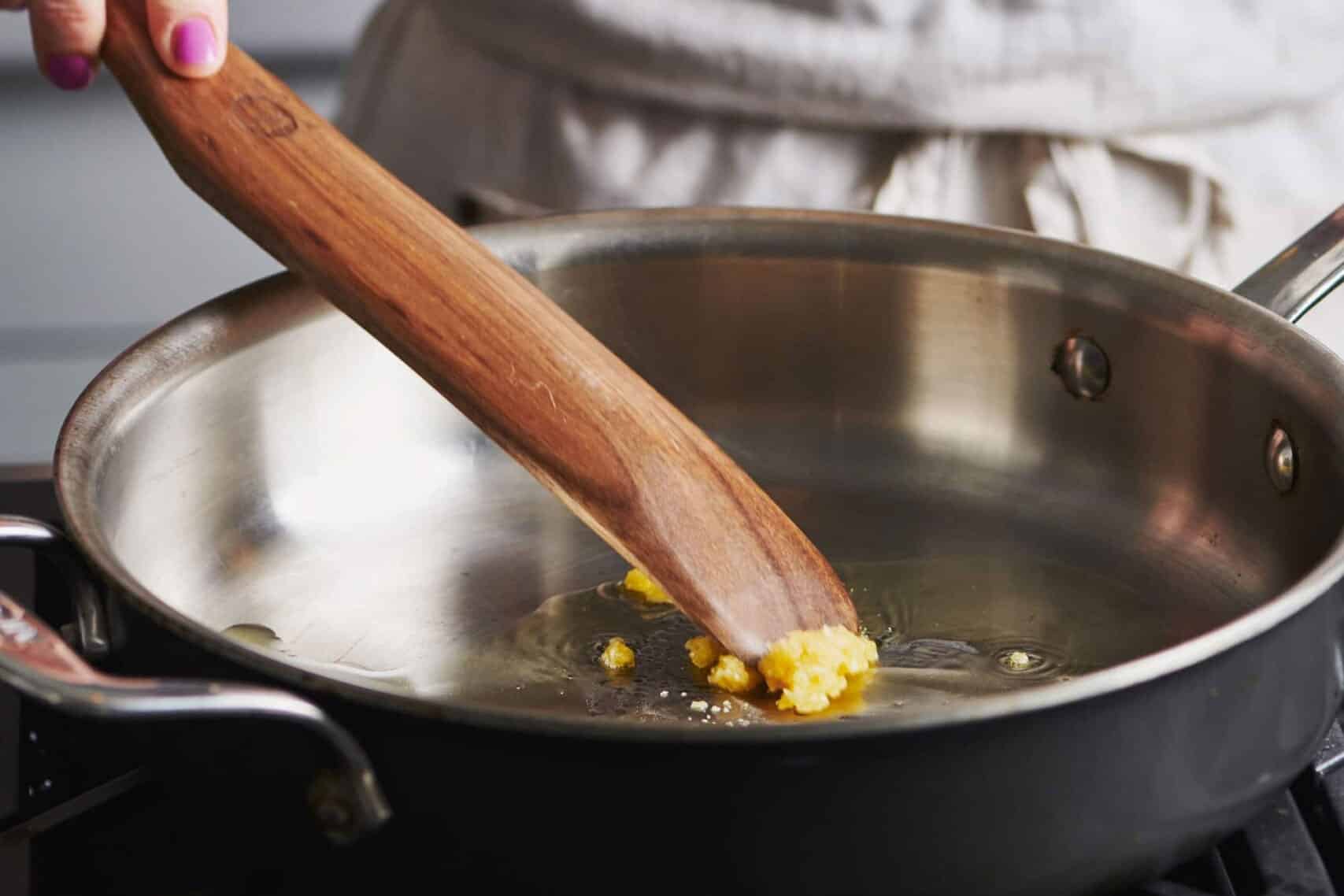
- Sauté the shrimp: Turn the heat up to medium-high. Add the shrimp and season with salt and pepper. Space out the shrimp so they are in a single layer. Let cook for a couple of minutes, then stir or flip and redistribute the shrimp so that the raw sides of the shrimp are against the pan.
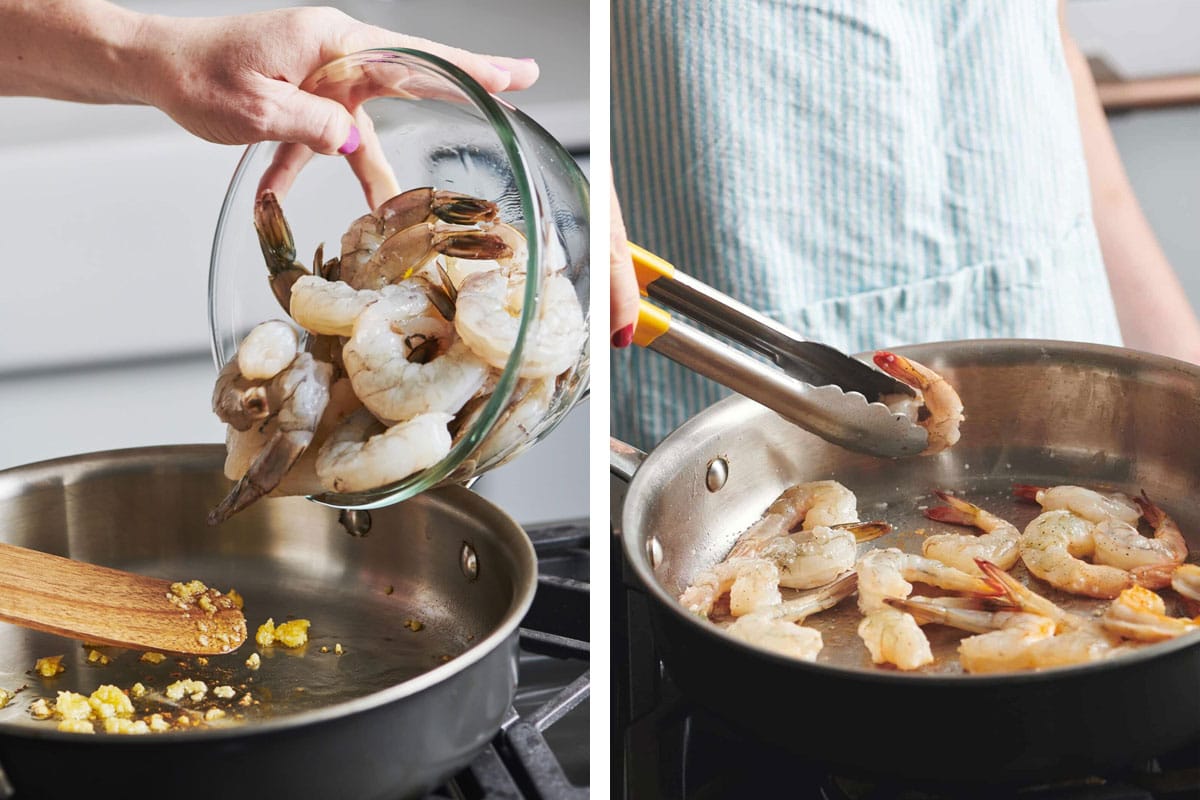
- Finish cooking, season, and serve: Large shrimp will take about 2 minutes per side, extra-large 2 or 3 minutes per side, and jumbo 3 or 4 minutes per side. Remove the shrimp from the heat, stir in the lemon zest and juice and/or the parsley if using, and adjust the seasonings.
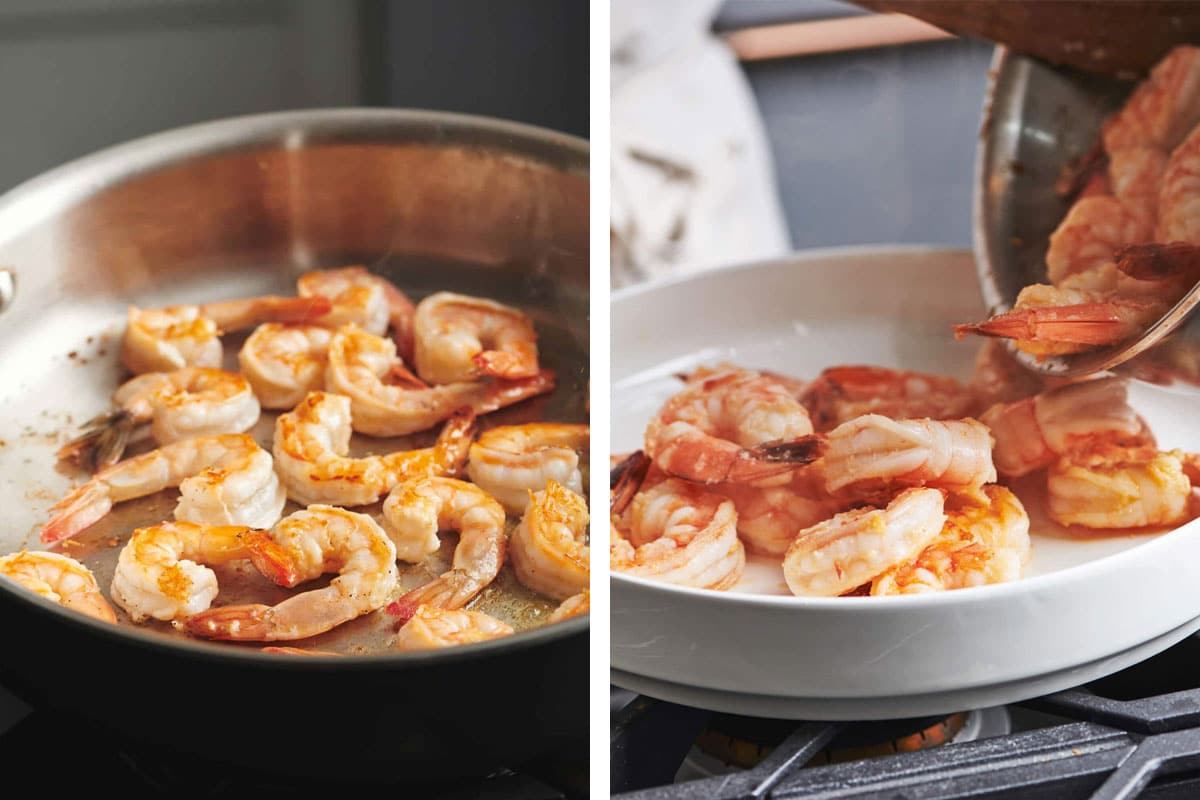
How to Know When Shrimp Are Cooked
When the shrimp have turned an opaque pinkish-white, and the inside is just barely white all the way through, perhaps with a slightly barely pink center, they are ready to be removed from the heat. They will continue to cook slightly after you take them off the heat and even after you remove them from the pan, so the middle will cook through.
Another cool tip: when your shrimp form a “C” shape, they are just cooked. Remove them from the pan right away. If they curl up too much, forming an “O” shape, they are overcooked.
Tips for Sautéeing Shrimp
- Tongs are a great tool for sautéeing shrimp in a pan; move quickly, turn them in the order they hit the pan (noting if there are any hot spots in the pan and if some of the shrimp are cooking more quickly than others; flip those first). This will allow the whole batch of shrimp to cook more evenly. For smaller shrimp, you may want to use a spatula since flipping each small shrimp individually is a bit time-consuming.
- Don’t crowd the pan — you want only a single layer of shrimp. Cook them in batches if necessary.
- You might also want to try Air Fryer Shrimp or Pan-Seared Scallops; they’re both just as easy!
FAQs
Large shrimp will take about 2 minutes per side to sauté in a pan, extra-large 2 or 3 minutes per side, and jumbo shrimp 3 or 4 minutes per side.
You do not need to rinse shrimp before cooking them. If you feel like they are gritty for any reason, you can rinse them in a colander using cold water. Make sure the sink is cleaned before and after rinsing to prevent bacterial cross-contamination.
Properly cooked shrimp will turn pink and opaque, with no grayness or translucency left. There will be a slightly pearly white pinkness to the color. Shrimp go from almost cooked to cooked in a minute, so keep a close eye on them and remove them from the pan as soon as they are done. Overcooked shrimp will turn rubbery and lose some of their natural sweetness.
What to Serve With Sautéed Shrimp
Serve sautéed shrimp over white rice, brown rice, couscous, quinoa, or millet. Any kind of potatoes would also go well, from mashed potatoes to roasted potatoes. For a high protein meal, simply cooked and seasoned shrimp are great paired with cooked veggies, such as sautéed broccoli, broccoli rabe, kale, or spinach.
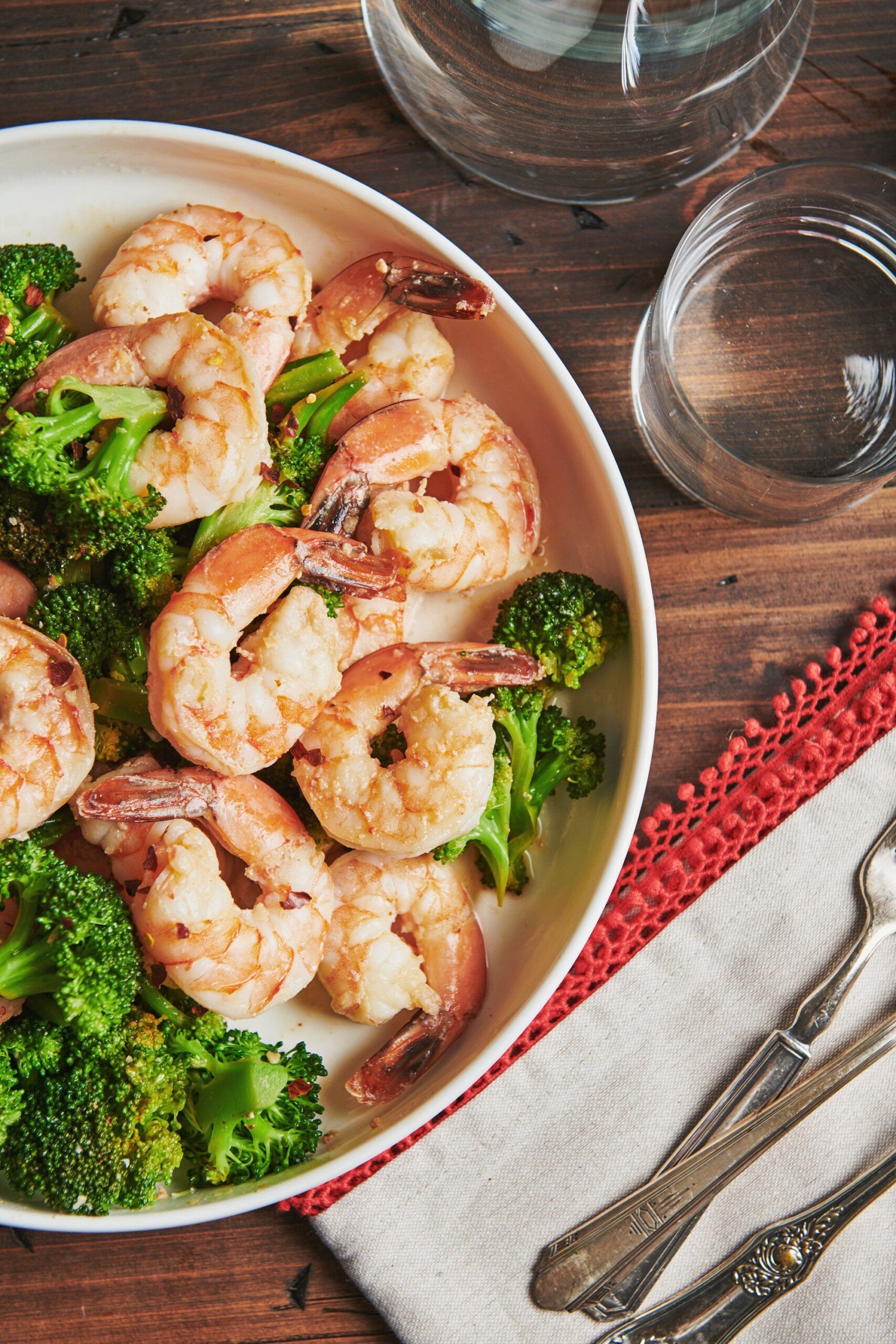
More Shrimp Recipes
- Summer Shrimp and Avocado Salad
- Shrimp Tacos
- Shrimp Ceviche
- Asian Stir-Fried Shrimp and Rice Noodles
- Pineapple Shrimp Fried Rice
Pin this now to find it later
Pin It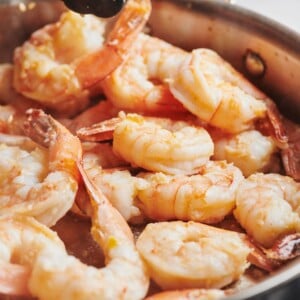
How to Sauté Shrimp on the Stove
Ingredients
- 2 tablespoons unsalted butter
- 1 tablespoon olive oil
- 4 teaspoons finely minced garlic
- 2 pounds shrimp (large (31/35 count), extra-large (21/25 count), or jumbo (16/20 count); peeled and deveined)
- Big pinch red pepper flakes (optional)
- Kosher salt and freshly ground black pepper (to taste)
- Finely grated zest and juice of 1 lemon (optional)
- 2 tablespoons minced fresh parsley
Instructions
- Heat the butter and oil in a very large skillet over medium heat. Sauté the garlic for 1 minute, until softened (do not allow it to brown).
- Turn the heat to medium-high, add the shrimp and red pepper flakes (if using), and season with salt and pepper. Space out the shrimp so they are in a single layer. Let them cook for a couple of minutes, then stir and redistribute the shrimp so that the raw sides of the shrimp are against the pan. Tongs are a great tool for this — it’s a bit labor-intensive to flip smaller shrimp, but you will end up with the whole batch of shrimp cooked more evenly. Don’t crowd the pan — you want only a single layer of shrimp.
- Large shrimp will take about 2 minutes per side, extra-large 2 or 3 minutes per side, and jumbo 3 or 4 minutes per side. Just remove one and cut it open; when it is opaque (meaning not translucent in the middle), they are done. Take them from the heat and from the pan as soon as they are cooked, as shrimp tend to go from cooked to overcooked quickly.
- Stir in the lemon zest and juice and/or the parsley if using, and adjust the seasonings.
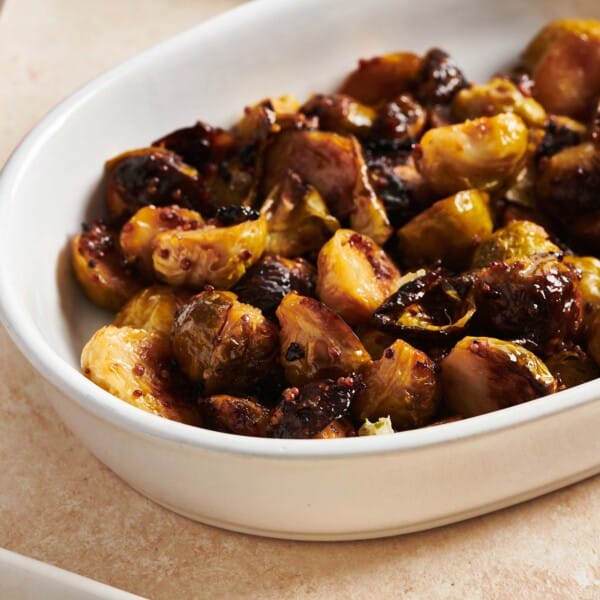
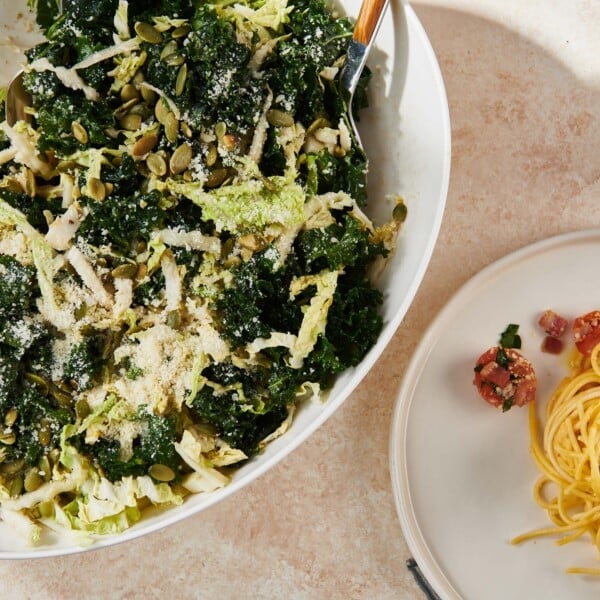
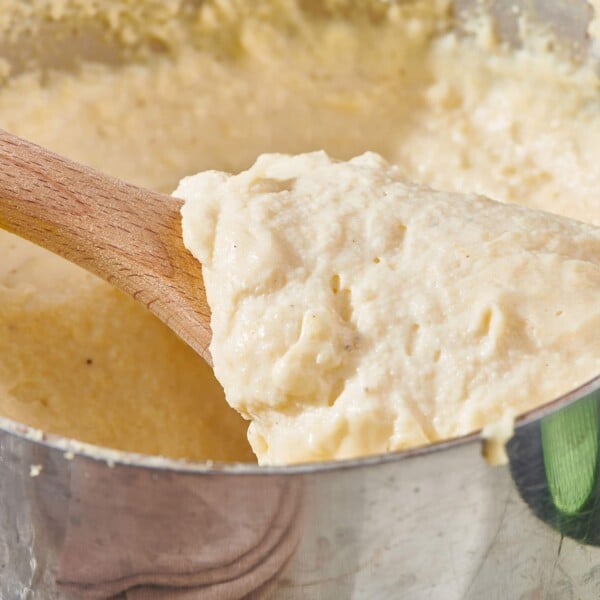
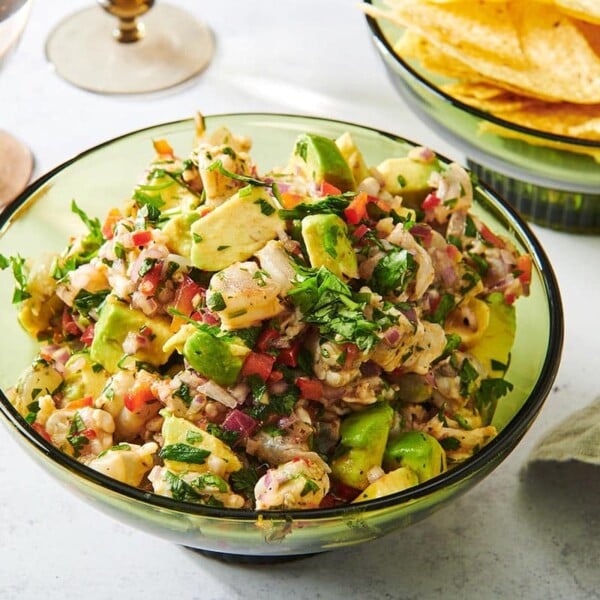
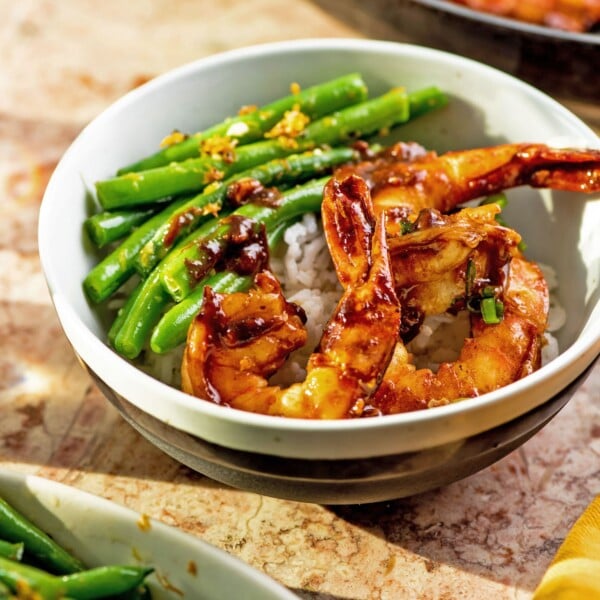
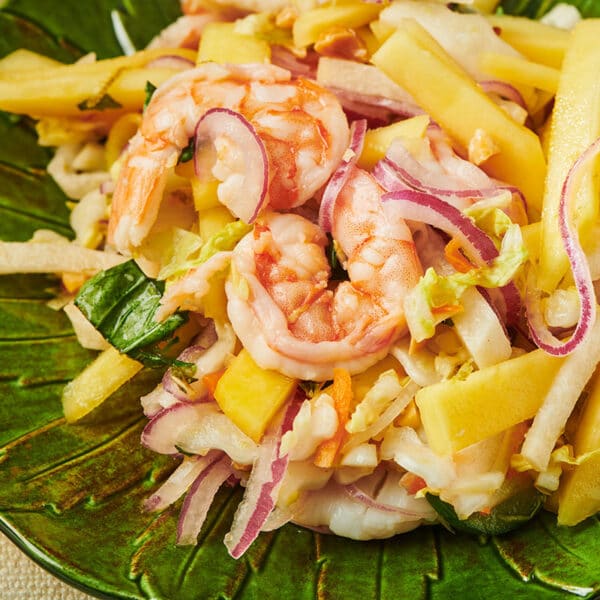
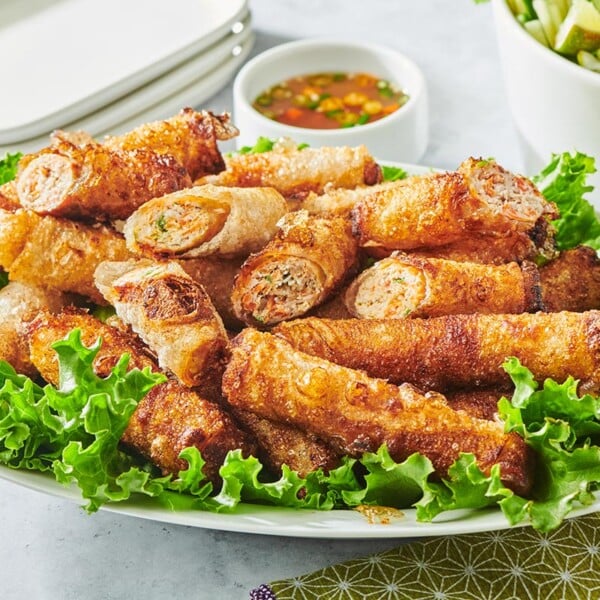









Loved it!!
I made this sauteed shrimp recipe for an alfredo dish and it was so easy and delicious!